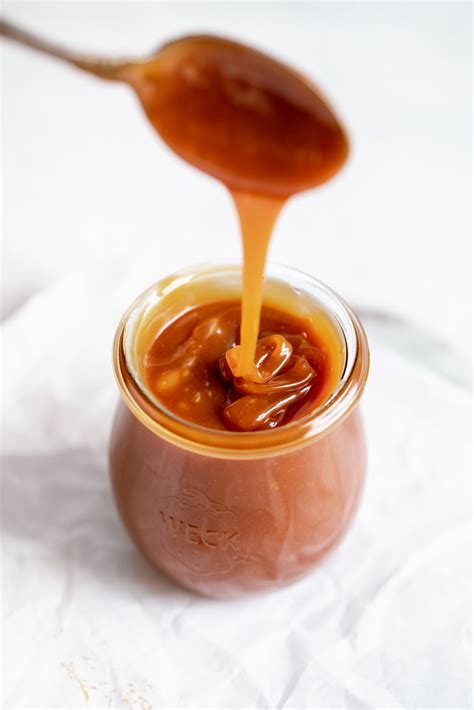How to Make Caramel: A Step-by-Step Guide for Delicious Success
Caramel. Just the word conjures images of rich, buttery sweetness. Whether you're aiming for a simple caramel sauce to drizzle over ice cream or a complex caramel for candy making, mastering this technique is a rewarding culinary journey. This guide will walk you through the process, ensuring your caramel turns out perfectly every time.
Understanding the Science of Caramel
Before we dive into the recipe, let's briefly explore the science behind caramel making. It's all about the Maillard reaction and caramelization. The Maillard reaction is a chemical reaction between amino acids and reducing sugars, resulting in a complex array of flavor compounds. Caramelization, on the other hand, is the browning of sugars when heated to high temperatures. Both contribute to the unique flavor and color of caramel.
Essential Ingredients & Equipment
You won't need a fancy kitchen to make amazing caramel. Here's what you'll need:
- Granulated sugar: The foundation of your caramel. Avoid using powdered sugar, as it contains anti-caking agents that can interfere with the process.
- Water: A small amount of water helps the sugar dissolve evenly and prevents burning.
- Butter (optional): Adding butter creates a richer, creamier caramel. Unsalted butter is preferred for better flavor control.
- Heavy cream or milk (optional): Incorporating cream or milk at the end tempers the caramel and creates a smoother, more luxurious texture. Be cautious when adding liquids to hot caramel, as it can splatter violently.
- Salt (optional): A pinch of salt balances the sweetness and enhances the overall flavor profile.
- Heavy-bottomed saucepan: Crucial for even heating and preventing scorching.
- Wooden spoon or spatula: For stirring (use caution; hot caramel can cause burns).
- Candy thermometer (recommended): Helps you achieve the desired consistency.
Step-by-Step Caramel Making Instructions
This method focuses on a basic caramel sauce, easily adaptable for various applications.
1. Preparing the Sugar
Combine sugar and water: In your heavy-bottomed saucepan, combine the sugar and water. Avoid stirring once added.
2. Cooking the Caramel
Heat gently: Place the saucepan over medium heat. Let the sugar dissolve completely and melt without stirring. This stage requires patience; swirling the pan occasionally might help even distribution.
Do not stir: Resist the urge to stir! Stirring at this stage can cause crystallization.
Monitor the color: As the sugar melts, it will transition through various colors – from clear to amber to a deep golden brown. A candy thermometer is highly recommended for precise control. For a light caramel, aim for around 320°F (160°C); for a darker caramel, go up to 350°F (175°C).
3. Incorporating Butter and Cream (Optional)
Add butter (if using): Once the desired color is reached, carefully remove the pan from the heat. Add the butter and stir gently until completely incorporated. Be cautious as the mixture will be extremely hot.
Add cream (if using): Slowly drizzle in the heavy cream or milk, whisking constantly to prevent splattering. The mixture will bubble vigorously. Continue whisking until smooth and combined.
Add salt (if using): Stir in a pinch of salt to enhance the flavor.
4. Cooling and Storage
Cool down: Pour the caramel into a heatproof bowl or jar. Allow it to cool completely before using or storing.
Storage: Store your caramel in an airtight container in the refrigerator for up to 2 weeks.
Tips for Caramel Success
- Use a clean saucepan: Any lingering moisture can interfere with the caramelization process.
- Don’t rush the process: Patience is key to perfectly smooth caramel.
- Use a candy thermometer: This ensures you achieve the right color and consistency.
- Be cautious of hot caramel: It can cause severe burns. Always use heat-resistant utensils and be careful when adding liquids.
Beyond Basic Caramel: Exploring Variations
Once you've mastered the basic caramel recipe, feel free to experiment! Add spices like cinnamon or cardamom, vanilla extract for a richer flavor, or even a splash of liqueur for an adult twist. The possibilities are endless!
By following these steps and tips, you'll be well on your way to creating delicious, restaurant-quality caramel. Happy cooking!
